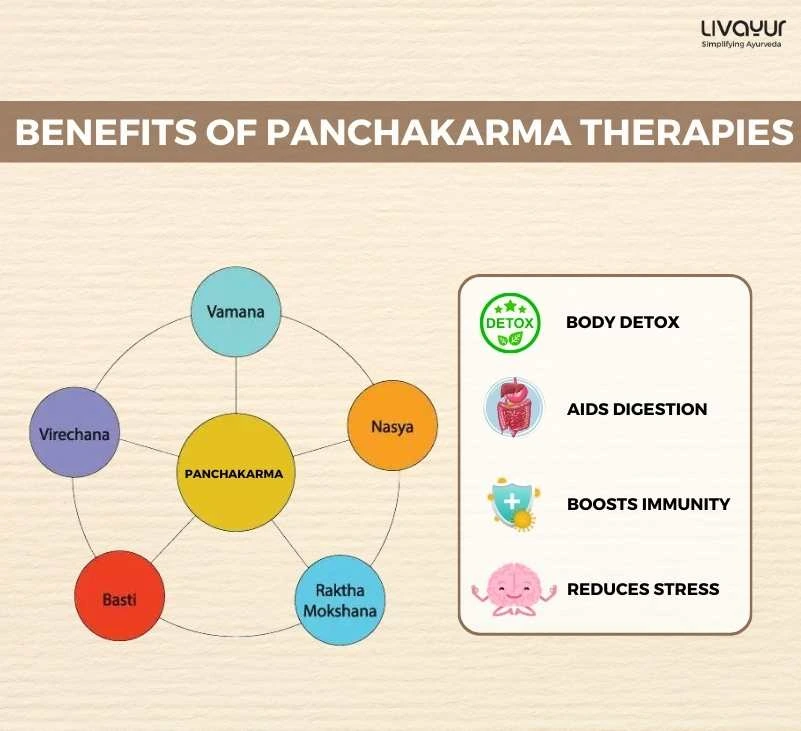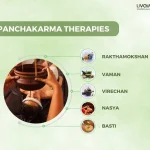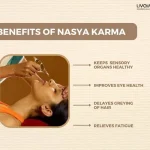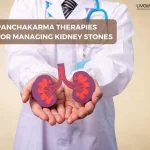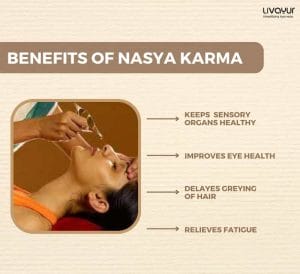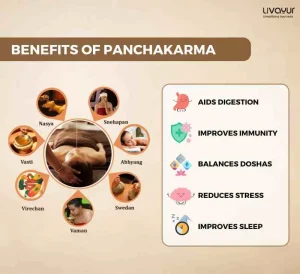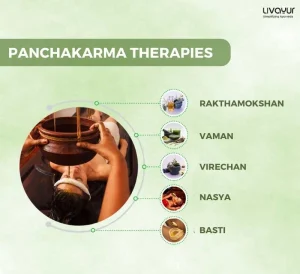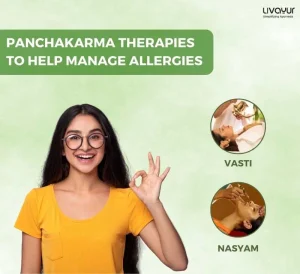This article is reviewed by an expert

Panchakarma is an ancient Ayurvedic treatment that has been practised in India for over 5,000 years. It involves five detoxification therapies that aim to cleanse the body and mind of toxins and impurities. Panchakarma is known for its numerous health benefits as well. In this article, we’ll go over the five treatments in Panchakarma and their various health benefits.[1] [2] [3]
What is Panchakarma Treatment?
Panchakarma is a Sanskrit word that means “five actions” or “five treatments.” These five treatments are designed to remove toxins and impurities from the body and mind, and restore the balance of the three doshas (vata, pitta, and kapha) in the body. The five treatments are:
Vamana (Emesis)
Vamana is the first step in Panchakarma treatment. It involves inducing vomiting to eliminate toxins from the body. This therapy is particularly beneficial for people with respiratory disorders, allergies, and skin diseases. It is also useful for those suffering from excessive mucus accumulation in the body.[1] [2] [4]
Virechana (Purgation)
Virechana is the second step in Panchakarma treatment. It involves the use of purgative herbs to cleanse the gastrointestinal tract and eliminate toxins from the body. This therapy is particularly beneficial for people with digestive disorders, liver disorders, and skin diseases. [1] [2] [5]
Basti (Enema)
Basti is the third step in Panchakarma treatment. It involves the administration of medicated oils or decoctions through the rectum to cleanse the colon and eliminate toxins from the body. This therapy is particularly beneficial for people with digestive disorders, constipation, and gynaecological disorders. [1] [2] [6]
Nasya (Nasal Administration of Medicated Oils)
Nasya is the fourth step in Panchakarma treatment. It involves the administration of medicated oils or herbal juices through the nostrils to cleanse the sinuses and eliminate toxins from the body. This therapy is particularly beneficial for people with respiratory disorders, allergies, and sinusitis. [1] [2] [7]
Rakta Moksha (Bloodletting)
Rakta Moksha is the fifth and final step in Panchakarma treatment. It involves the removal of a small amount of blood from the body to eliminate toxins and impurities from the blood. This therapy is particularly beneficial for people with skin diseases, hypertension, and gout. [1] [2]
Benefits of Panchakarma Treatment
Panchakarma treatment is known for its numerous health benefits. Here are some of the benefits of Panchakarma treatment:
Detoxifies the body
The five treatments in Panchakarma work together to eliminate toxins from the body and restore balance to the doshas (vata, pitta, and kapha). The detoxification process has a cleansing effect which helps eliminate the underlying causes of several diseases and ailments while leaving the body rejuvenated.
Improves Digestion

Panchakarma treatment helps to improve digestion by eliminating toxins from the gastrointestinal tract and promoting the secretion of digestive juices. [1] [2]
Boosts Immunity
Panchakarma treatment helps to boost immunity by eliminating toxins from the body and promoting the production of healthy cells. [1] [2]
Reduces Stress and Anxiety

Panchakarma treatment helps to reduce stress and anxiety by promoting relaxation and reducing the production of stress hormones. [1] [2]
Promotes Overall Well-being
Panchakarma treatment promotes overall well-being by improving digestion, boosting immunity, and reducing stress and anxiety. [1] [2]
FAQs
1. Is Panchakarma treatment safe?
Panchakarma treatment is generally considered safe when performed by a trained and experienced Ayurvedic practitioner. However, it is important to note that some of the procedures involved in Panchakarma, such as therapeutic vomiting and bloodletting, can have potential risks and should only be performed under close supervision.
2. How long does a Panchakarma treatment last?
The duration of a Panchakarma treatment can vary depending on individual needs and health conditions. Generally, it can take a minimum of 21 days.
3. Is Panchakarma treatment suitable for everyone?
Panchakarma treatment is not suitable for everyone, especially pregnant women, children, and individuals with certain health conditions such as severe anaemia, heart disease, and cancer. It is important to consult an Ayurvedic practitioner before undergoing Panchakarma treatment to ensure that it is safe and appropriate for your individual needs.
4. Is Panchakarma treatment painful?
Panchakarma treatment is generally not painful, but some of the procedures involved may cause discomfort or minor pain. For example, the process of therapeutic vomiting or purgation can be uncomfortable, but it is usually followed by a sense of relief and rejuvenation.
5. How do I prepare for a Panchakarma treatment?
Before undergoing a Panchakarma treatment, it is important to consult with an Ayurvedic practitioner to determine the appropriate treatment plan for your individual needs. You may also be advised to follow certain dietary guidelines and lifestyle modifications to prepare your body for the treatment.
Conclusion
Panchakarma is an ancient Ayurvedic treatment that has been practised in India for over 5,000 years. It involves five detoxification therapies that aim to cleanse the body and mind of toxins and impurities. Panchakarma treatment is known for its numerous health benefits, such as improving digestion, boosting immunity, reducing stress and anxiety, and promoting overall well-being. If you are interested in experiencing the benefits of Panchakarma treatment, it is best to consult an Ayurvedic practitioner who can guide you through the process.
Disclaimer: This article is from a health and wellness perspective only and does not constitute medical advice. Kindly seek the help of a trained medical practitioner before initiating any treatment.
References:
- An Introduction to Panchakarma (ayurveda.com)
- View of Role of Panchakarma in preventing lifestyle disorders (jaims.in)
- Ayurveda and Panchakarma: Measuring the Effects of a Holistic Health Intervention – PMC (nih.gov)
- Observations on Vamana procedure in healthy volunteers – PMC (nih.gov)
- A clinical study on Virechana Karma (therapeutic purgation) over the gut flora with special reference to obesity – PMC (nih.gov)
- Importance Of Matra Basti According To Panchakarma
- Therapeutic Uses Of Nasya Karma: Conceptual Critical Review | International Journal of Ayurveda and Pharma Research (ijaprs.com)




